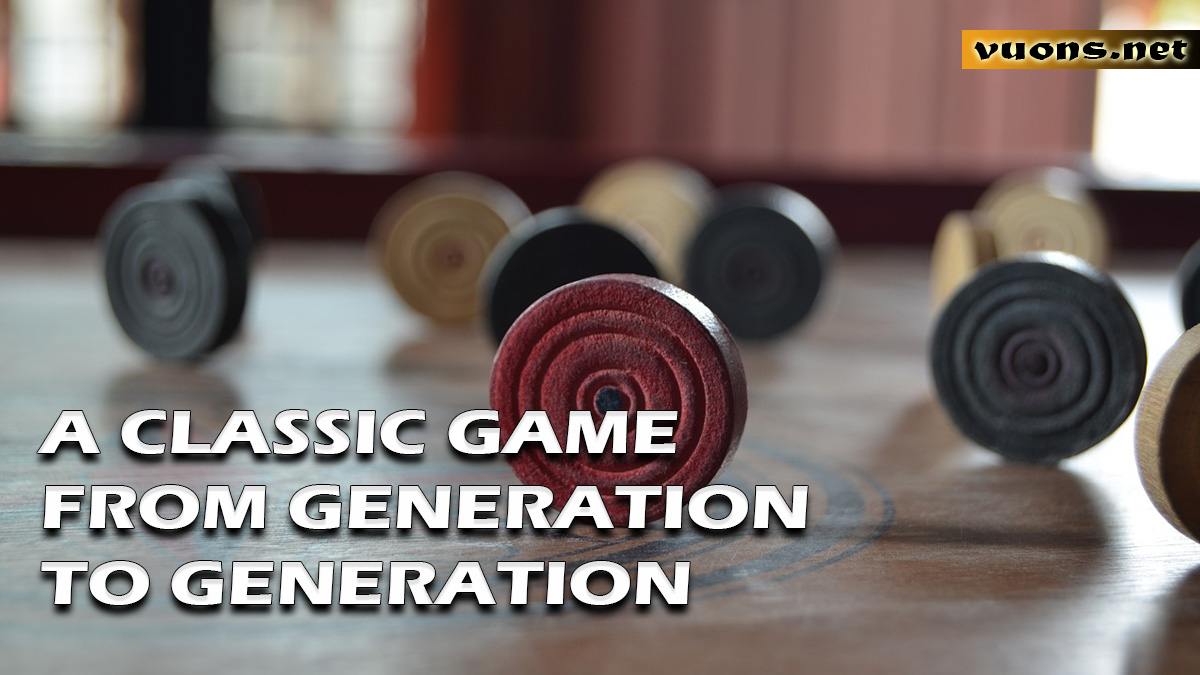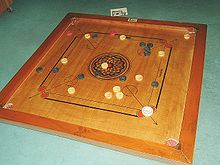History and Evolution of Carrom Games in Indonesia
The Origin of Carrom: From South Asia to the Archipelago
Currently one of the most popular board games in Indonesia, the game of carom has a long history dating back to South Asia. “The Origins of Carom: From South Asia to the Archipelago” charts the game’s fascinating journey from its cultural roots to becoming an integral part of everyday life in Indonesia.
Carom Early History Games
Carom is known by various names throughout the world and is thought to originate from India. This game is believed to have been played in the 18th century. Carom was originally played by royalty and nobility in Indian courts. The game format is simple, consisting of a wooden board and pieces made of ivory or hardwood.
Spread throughout the archipelago
It is said that carom spread throughout the archipelago during the colonial period. This game became popular in various regions of the archipelago through trade routes and intense cultural exchange between Indian traders and local Indonesian communities. Initially this game was only played among limited circles, but as time went by its popularity became more widespread.
Indonesian Adaptation and Development
When Carom started to become popular in Indonesia, the game underwent various adaptations. Indonesian carrom boards are generally made from local materials such as teak and mahogany which are known for their strength. Carom seeds were originally made from ivory, but were later replaced with seeds that were easier to find and environmentally friendly.
Other adjustments can be seen in the game rules. Although the basic rules of Carrom are the same, there are slight differences between regions, making the game unique in each location. In some areas, carom is played with additional local rules that add a special flavor to each game.
Carom In Local Culture
Carom is not just a game, but also part of local culture. This game is often played at family gatherings, social events and traditional festivals. In many villages, carrom boards are the center of activity in community centers, where people gather to play and socialize.
Carom also plays a role in building cohesion. The game requires strategy, skill, and cooperation, all of which help strengthen relationships between players. Carom games are often an opportunity to teach young people values such as sportsmanship, cooperation and patience.
Popularity and Modern Tournaments
Carom is still very popular in Indonesia today. In fact, various carrom tournaments are held locally and throughout the country, attracting participants from all age groups. This tournament is not just a competition, but also an opportunity to preserve and introduce this traditional game to the younger generation.
The increasing popularity of caramel is also supported by social media and digital platforms. Video tutorials, game tips, and stories about Carom are frequently shared online, increasing the game’s appeal among Millennials and Gen Z.
The Development of Carrom in Indonesia: From Generation to Generation
Now an important part of the daily lives of many Indonesian households, the game of carom has a rich and interesting development history. “The Development of Carrom in Indonesia: From Generation to Generation” explains how this game developed and was passed down from one generation to the next, and how it influenced local culture
The Origin of Carrom in Indonesia
Carrom is believed to have entered Indonesia during the colonial period through traders and sailors from India and South Asia. This game was initially introduced in large ports such as Batavia (now Jakarta) and Surabaya, where cultural exchange took place actively. In a short time, carrom began to be played among the local nobility and elite, then spread to the wider community.
Carrom of the Ancients
At the beginning of the development of carom in Indonesia, carom was played with simple musical instruments. Carom boards are usually made from local wood such as teak, while carom seeds are made from easily available materials such as hardwood and small stones. This game is often used for home entertainment, especially at family gatherings and social events.
The first generation to play carom in Indonesia were generally those who had access to city centers and ports. Later, the game spread to rural areas and carrom boards became treasured items passed down from generation to generation.
Adaptation and Innovation
Over time, Indonesian carom has experienced various adaptations and innovations. With the emergence of local carom board and seed manufacturers, the game has become increasingly affordable and popular. Carom board designs are also starting to change, each region has different styles and sizes of boards.
There is also innovation in the rules of the game. The basic rules of the Carrom Festival remain the same, but each community often adds its own local rules. This not only brings diversity to the game, but also creates a strong local identity.
Carrom and Local Culture
Carrom is an important part of local culture in various regions in Indonesia. In many villages, the game is played in community centers or at home on special occasions. Carom is a forum for networking, developing strategies and instilling values such as cooperation and sportsmanship in the younger generation.
In the local cultural context, carom is often more than just a game. It becomes a medium for strengthening ties between residents, a means of education, and even becomes part of traditional ceremonies in several places.
Carrom in the Modern Era
In the early modern era, caramel candy remained very popular. In fact, advances in technology and social media have given new life to this game. Video tutorials, online tournaments and digital carrom communities help introduce the game to a younger generation familiar with digital gaming.
Carom tournaments at local and national levels are also occurring more frequently. This tournament is not just a competition event, but also a means to preserve traditional sports and introduce them to more people.
Cross-Generational Heritage
The development of carom in Indonesia: From generation to generation, it shows how this game has become a very valuable part of our cultural heritage. Carrom continues to be played, passed down and developed from generation to generation. This shows its timeless appeal and ability to adapt to changing times.
Carom has transcended the boundaries of time and era and has become something that connects generations. Through this game the values of unity, cooperation and sportsmanship continue to be instilled, making Carrom not just entertainment but a rich and vibrant cultural heritage.
Carrom in Local Culture: Tradition and Togetherness
Karom is a simple board game that relies on skill and strategy and has become an integral part of local culture in various regions in Indonesia. “Carom in Local Culture: Tradition and Unity” shows that this game is not only a means of entertainment, but is also an important means of preserving traditions and strengthening social relations in society.
History of Caramel in Indonesia
Caramel is thought to have entered Indonesia during the colonial period through interactions with traders and sailors from South Asia, especially India. This game was initially known among the elite and nobility, but eventually spread to the wider community. Over time, carom was adapted and modified to suit local culture, creating unique variations of the game in different regions.
Caramel as part of everyday life
In many communities in Indonesia, caramel is part of everyday life. In rural areas, caramel bars often take center stage in community centers and at home. These games are played by all groups, from children to adults, and are therefore an important means of socialization and recreational activities.
Carrom is often played on special occasions such as holiday celebrations, weddings and local holidays. In this context, carom is not just a game, but also part of a social ritual that strengthens ties with society.
Values Taught Through Carom
Carom teaches many positive values that are important in social life. This includes cooperation, sportsmanship and patience. The game of Carrom requires each player to work together with teammates to achieve victory, teaching the importance of cooperation and communication.
Carom also trains fine motor skills and strategy. Players must shoot caramel beans accurately and plan their movements carefully. This will help you improve your critical thinking and strategic planning skills which will be useful in your daily life.
Carrom in Traditional Ceremonies
In some areas, carom is part of local traditional ceremonies and traditions. For example, in Bali, carom is played as part of the Galungan and Kuningan celebrations, two important holidays in the Balinese Hindu calendar. The game is considered a way to strengthen family and community relationships while preserving cultural traditions.
Carrom is often held in the form of tournaments at village festivals and traditional events. These tournaments typically attract large numbers of participants and spectators, creating a festive atmosphere filled with community spirit.
Carrom and Modern Technology
Carrom is a traditional game, but its popularity has not diminished in the digital era. In fact, modern technology has helped expand the scope of this game. Video tutorials, online communities and the Carrom Game app allow you to learn and play Carrom from anywhere.
Online carom tournaments are also becoming increasingly popular, allowing players from different regions to compete and socialize. This not only strengthens the carrom community, but also helps preserve this traditional game among the younger generation who are familiar with this technology.




